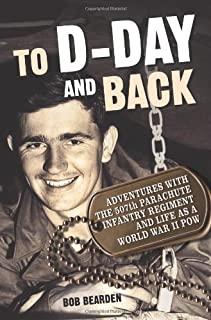
Hunt, Jeffrey Wm
product information
description
9During the late summer and fall of 1863, the Civil War in the Eastern Theater was anything but inconsequential. Generals Meade and Lee continued where they had left off, executing daring marches while boldly maneuvering the chess pieces of war in an effort to gain decisive strategic and tactical advantage. Cavalry actions crisscrossed the rolling landscape, and bloody battle revealed to both sides the command deficiencies left in the wake of Gettysburg. It was the first and only time in the war Meade exercised control of the Army of the Potomac on his own terms. Jeffrey Wm Hunt brilliantly dissects this period of the war in Meade and Lee at Bristoe Station: The Problems of Command and Strategy After Gettysburg, from Brandy Station to the Buckland Races, August 1 to October 31, 1863.
The carnage of Gettysburg left both armies in varying states of command chaos as the focus of the war shifted to the Western Theater. Lee further depleted his ranks by dispatching his best corps commander, James Longstreet, and most of his First Corps via rail to reinforce Braxton Bragg's Army of Tennessee. The Union defeat at Chickamauga forced Meade to follow suit with the XI Corps and XII Corps. Despite these reductions, the aggressive Lee assumed the strategic offensive against his more careful Northern opponent, who was also busy waging a rearguard action against politicians in Washington.
Meade and Lee at Bristoe Station is a fast-paced and dynamic account of how the Army of Northern Virginia carried the war above the Rappahannock River once more in an effort to regain the initiative and retrieve the laurels lost in Pennsylvania. When the opportunity beckoned Lee took it, knocking Meade back on his heels with a threat to his army as serious as the one John Pope faced one year earlier. As Lee learned once more, A. P. Hill was no Stonewall Jackson, and with Longstreet away Lee's cudgel was no longer as mighty as he wished. The Confederate tide of the campaign broke on the shoals of Bristoe Station in a signal defeat. The next move was up to George Meade.
Hunt's follow-up volume to his award-winning Meade and Lee After Gettysburg is grounded upon official reports, regimental histories, letters, newspapers, and other archival sources. Together, they provide a day-by-day account of the fascinating high-stakes affair during this three-month period. Coupled with original maps and outstanding photographs, this new study offers a significant contribution to Civil War literature.
The carnage of Gettysburg left both armies in varying states of command chaos as the focus of the war shifted to the Western Theater. Lee further depleted his ranks by dispatching his best corps commander, James Longstreet, and most of his First Corps via rail to reinforce Braxton Bragg's Army of Tennessee. The Union defeat at Chickamauga forced Meade to follow suit with the XI Corps and XII Corps. Despite these reductions, the aggressive Lee assumed the strategic offensive against his more careful Northern opponent, who was also busy waging a rearguard action against politicians in Washington.
Meade and Lee at Bristoe Station is a fast-paced and dynamic account of how the Army of Northern Virginia carried the war above the Rappahannock River once more in an effort to regain the initiative and retrieve the laurels lost in Pennsylvania. When the opportunity beckoned Lee took it, knocking Meade back on his heels with a threat to his army as serious as the one John Pope faced one year earlier. As Lee learned once more, A. P. Hill was no Stonewall Jackson, and with Longstreet away Lee's cudgel was no longer as mighty as he wished. The Confederate tide of the campaign broke on the shoals of Bristoe Station in a signal defeat. The next move was up to George Meade.
Hunt's follow-up volume to his award-winning Meade and Lee After Gettysburg is grounded upon official reports, regimental histories, letters, newspapers, and other archival sources. Together, they provide a day-by-day account of the fascinating high-stakes affair during this three-month period. Coupled with original maps and outstanding photographs, this new study offers a significant contribution to Civil War literature.
member goods
No member items were found under this heading.
Return Policy
All sales are final
Shipping
No special shipping considerations available.
Shipping fees determined at checkout.







